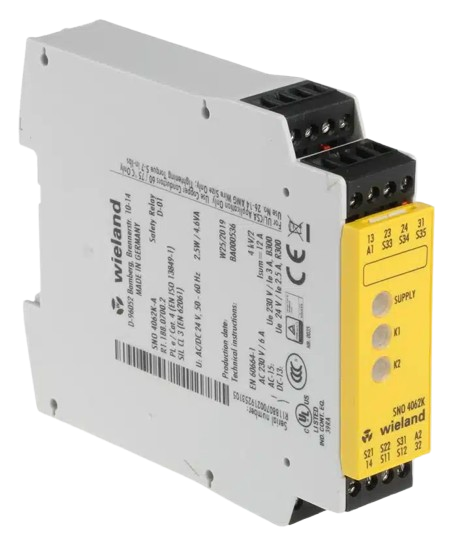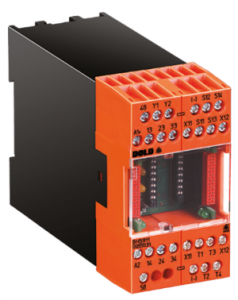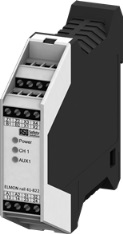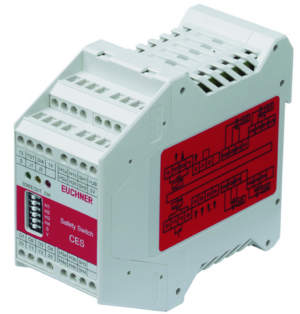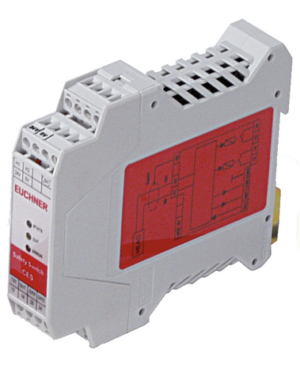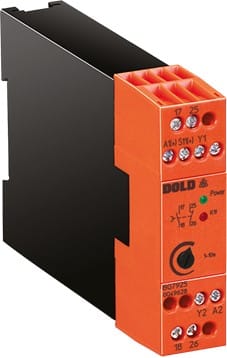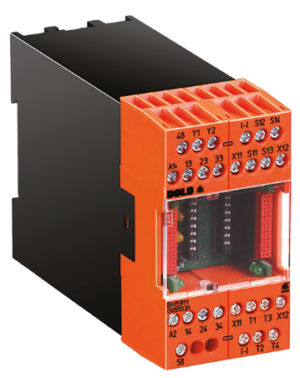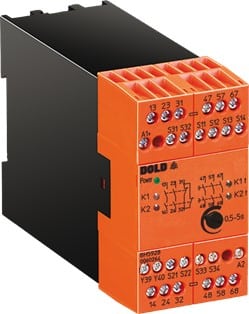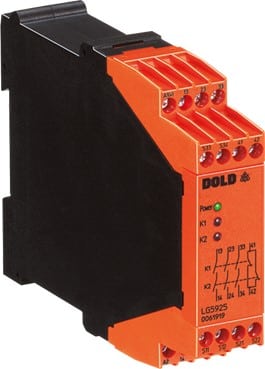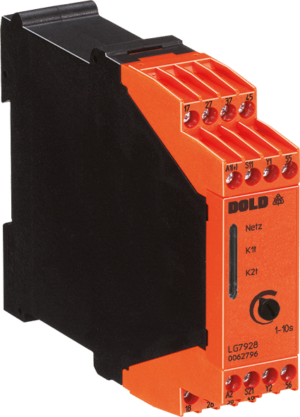Safety relay modules are an essential part of any industrial safety circuit, ensuring safe operation and reliable control over critical processes. Designed to support a…
Safety relay modules are an essential part of any industrial safety circuit, ensuring safe operation and reliable control over critical processes. Designed to support a wide range of safety functions, these devices handle everything from E-Stop safety relays and interlock switches to safety door switches, offering comprehensive protection in both standard and hazardous conditions.
Modern safety technology integrates safety monitoring relays, safety switches, and channel safety circuits into compact, flexible modules. These safety relay modules often include both manual reset and automatic reset options, catering to various safety strategies. Whether supporting an emergency stop mechanism or managing interlocks tied to programmable logic controllers, these systems ensure consistent, compliant machine operation.
Equipped with advanced monitoring capabilities, safety relays can detect potential errors such as wiring faults or contact welding, triggering immediate safe shutdowns. Multiple output configurations, including timed responses through timer relays, enable engineers to tailor the relay’s behavior to specific machine tasks.
High-integrity safety contacts and built-in diagnostic options allow for rapid fault detection and streamlined maintenance, minimizing downtime while ensuring safety. This wide product range is supported with extensive product details, helping integrators select the right solution quickly. Whether you’re protecting a standalone machine or a complex automated line, safety relays form the core of robust, future-ready industrial protection.
Importance of Safety Relays in Industrial Automation
In industrial automation, safety relays play a crucial role in reducing risk and ensuring compliance with safety requirements. They are used to monitor critical safety devices and control power to dangerous machine elements. Their rapid response and fail-safe architecture support maximum safety in manufacturing, processing, and packaging environments.
Types of Safety Relays
E-Stop Relays
Emergency stop (E-Stop) relays are specifically designed to monitor emergency stop buttons and ensure a safe halt to machinery when activated. These relays often include features such as self-monitoring, dual-channel inputs, and force-guided contacts to verify correct operation, making them vital for emergency stop functions across diverse industrial applications.
Safety Gate Time Delay Relays
Safety gate time delay relays manage access control systems, allowing for controlled delay before shutting down machinery after a safety gate is opened. These are commonly used in systems where an operator may require time to exit a hazardous area safely before power is disconnected, enhancing safety at entry points and safety doors.
Frequency Monitoring Relays
Frequency monitoring relays help detect abnormal speed conditions, particularly in rotating machinery. These relays are key in speed monitoring safety systems, triggering protective actions if frequency deviates from the safe range. They are often implemented in conveyors, motors, and high-speed machines for improved operational safety.
Multifunction Relays
Multifunction safety relays combine multiple protective functions into a single compact device. These may include monitoring emergency stop buttons, light curtains, two-hand controls, and safety mats. By integrating these capabilities, multifunction relays reduce panel space and simplify wiring for complex industrial safety applications.
Safety Mat & Edge Relays
These relays are tailored for monitoring pressure-sensitive safety devices such as safety mats and safety edges. Common in robot cells, AGVs, and press machines, they activate machine stop functions upon detecting the presence of personnel or pressure. They support input signals from independent channels and often comply with the highest safety category levels.
Key Features of Safety Relays
Dual-Channel Safety Monitoring
Dual-channel safety monitoring ensures redundancy in signal detection, reducing the chance of false negatives. Safety relays with this feature can detect discrepancies between input channels and trigger a shutdown if any fault is found, ensuring optimal safety performance.
Contact Expansion Modules
Contact expansion modules are used to increase the number of outputs from a safety relay. This allows the relay to control multiple actuators or devices, especially in large-scale industrial applications where broad safety coverage is needed.
Force-Guided Relays
Force-guided contacts are mechanically linked to prevent welded contacts from going undetected. This is a fundamental feature in high-quality safety relays and ensures that monitoring systems remain reliable, even in demanding environments.
Differences Between Safe and Non-Safe Electromechanical Relays
While non-safe relays serve general switching purposes, safety relays incorporate fail-safe principles, force-guided contacts, and diagnostic feedback. They are designed to meet stringent functional safety standards and are tested for fault tolerance, making them suitable for safety-critical tasks in control cabinets and machinery.
Industry Standards and Certifications
ISO Standards
Safety relays are built to comply with international ISO safety function standards such as ISO 13849-1 (Performance Levels) and ISO 12100. These standards govern design principles and risk reduction in machinery.
CE Marking
CE marking certifies that safety relays meet the European Union’s essential safety and health requirements. It is crucial for products distributed in the EU and provides assurance of regulatory compliance.
UL Certifications
UL-certified safety relays meet North American safety requirements and are tested for reliability, durability, and fire resistance. UL listing is especially important for applications in the U.S. and Canada.
Applications of Safety Relays
Hazardous Area Protection
In zones classified as hazardous, safety relays form part of protective circuits that isolate power, prevent equipment startup, or initiate shutdowns to avoid injury or explosion risks.
Simple Machine Monitoring
For standalone machines, a safety control relay offers a cost-effective way to monitor devices like light grids, safety input devices, and interlocks. Compact design options are often favored in these scenarios.
Emergency Shutdown Mechanisms
In larger systems, safety relays enable rapid and safe shutdown of multiple machine sections. They are frequently integrated into industrial safety systems for monitoring of safety devices and compliance with functional safety standards.
Benefits of Using Safety Relays
Enhancing Machinery Safety
Safety relays minimize the chance of malfunctioning control logic by providing dedicated and validated safety logic for industrial machines, conveyors, and robotics.
Improving Personnel Protection
By facilitating safety category-rated circuits, safety relays support effective prevention of accidents. They ensure that safety inputs such as emergency stop buttons, safety doors, and light barriers are acted upon swiftly and reliably.
Challenges and Considerations
Installation and Integration
Integrating safety relays requires precise configuration to match the application’s safety level. Considerations include wiring complexity, the use of screw terminals or push-in connection technology, supply voltage compatibility, and the need for modular safety relay expandability. Ensuring correct installation is vital for both compliance and performance.
For more information you can read our blog post here.
If you are unsure about your application contact Venus now. We solve problems!
